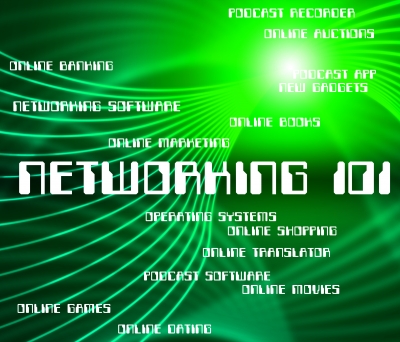In the dim and distant past, the reputation of a small business was all about word of mouth. With no internet, reputation was based on you…how you conducted business, how you interacted with your customers and how your products hit the mark. If you got a negative comment, you would soon know about it, as most businesses were local, and you then had the chance to fix it.
Nowadays, most businesses, even very small businesses, have an online presence – be it a website, social media page or advert. Because of the internet, small businesses are not limited to local business; we can sell worldwide and reach millions of people at the click of a mouse…and businesses are open 24 hours a day, seven days a week. Although this is fabulous, in that you can reach millions of potential customers, it’s harder to manage your business’s reputation. If someone has left a negative comment somewhere on the web, you won’t always see it, but it can be just as damaging as a word of mouth negative remark. So how do you manage your online reputation?
Google your name
Have you ever googled your name or business name? Try it and see what pops up…you will be surprised…when I did it, there was information about me and my business, but also various events I was involved in years ago when I was employed in the UK. Also try entering your name into google images – that surprised me too!
Every single day, thousands of people are looking online for information about businesses or just a particular person, simply by typing their name into a search engine. With information about you and your business in the public domain, managing your reputation is crucially important. It’s not difficult to manage, but it does take time.
What if you find a negative comment online about your business? You’ll probably want to remove it. If the comment is something someone has said about you on their website or blog, contact them direct and politely ask them to remove it.
Set up Google Alert
You can go into Google Alert and request that you get an email notification every time your name is published online. Simply type google.com/alerts into your browser and open the site. Type your name or business name into the search box. Choose ‘show options’ to narrow the search to a specific language/source/region. Then select ‘create alert’ – you can choose to have alerts sent to you daily or weekly…and you can cancel at any time. I’m doing it for a month just out of interest to see who searches my name…could be interesting!
Be active on Social Media
Not all of us want to do this or have time to, but it is worth joining a few social networks – even if you just use them to fully fill out the profile pages. You don’t have to be completely active on them all the time, but if you add content once a month, this can help your online reputation. As well as the usual sites, such as Facebook, LinkedIn, Twitter and Instagram, there is also Tumblr, Pinterest and YouTube, which are great channels to be a part of. I belong to a few of them, but am mainly active on Facebook, LinkedIn, Pinterest and YouTube. One of my goals for this year is to be more active on these and a couple of other sites…even if only adding the odd article or adding a comment to something and why it is interesting to me.
If you do go onto new sites, fill out as much information as you can, especially your name – make sure you use your full name, not nicknames.
It’s also very important too, that if you do set up social media sites and potential customers contact you or ask questions, that you reply promptly. If you’re on social media sites, people expect you to be sociable! By posting regularly, asking questions, answering questions and giving advice, you’ll be engaging with people and eventually you will find you have a good and lasting relationship with your audience.
Be careful about what you post
There are times when we all take photos on a night out and post them to Facebook … but be wary of doing this as it could seriously affect your business reputation. The problem with social media is that other people can take photos of you and post them without your permission. If you do post pictures, remember to put a privacy setting on them so only your friends can see them. There is still a problem with this as social media sites are always changing their rules and regulations, so you can’t be sure that privacy settings are really private…or will be in future. I always used to tell my children when they were teenagers – don’t post anything that you wouldn’t mind your grandparents seeing or, for that matter, the whole wide world! After all, it is the World Wide Web!
If someone does post an embarrassing photo of you and ‘tags’ you in it, you can remove that tag … and there is nothing stopping you from contacting the person who has posted it and asking them to remove it.
Encourage reviews
The upside to having an online presence, such as a website or blog, is that you can encourage reviews of your products and services. This is great for your reputation as those that love what you do tell the world about it when they write a good review. However, there will always be the odd person who will give you a bad review or say something negative about you or your business. This is not necessarily a bad thing; the knee jerk reaction is to delete negative comments, but in reality, if you can address the problem publicly, taking a proactive approach, apologising if necessary and offering alternative products or solutions…or asking the person making the comment to suggest how you can address the problem. Often, this shows you listen to your customers and take action, which can only show you in good light. The worst thing you can do is to ignore it and hope it will go away, or delete it. My advice would be to always reply and try and address any issues. Often this turns a negative into a positive.
If you don’t monitor and actively improve your online reputation, you are missing an ideal opportunity to grow your brand, earn respect from your customers and hopefully build your business.
I hope this article has helped address some of the issues around managing your online reputation. If you have any other tips, please let me know – what would you add to this list?










 The key word here is ‘valuable’ content; content that will speak to your customers, content that they want and need, maybe information that solves a problem they have. In order to do this, you need to know your existing customers and research and get to know your prospective customers, so you can deliver that all important content. It may take some time to get it right, but when you do, you will have the opportunity to expand your business, build your reputation and ultimately be known as an expert in your field.
The key word here is ‘valuable’ content; content that will speak to your customers, content that they want and need, maybe information that solves a problem they have. In order to do this, you need to know your existing customers and research and get to know your prospective customers, so you can deliver that all important content. It may take some time to get it right, but when you do, you will have the opportunity to expand your business, build your reputation and ultimately be known as an expert in your field. Depending on what you do, that could lead to a sale or a request for your services…and they are likely to return to your site in future.
Depending on what you do, that could lead to a sale or a request for your services…and they are likely to return to your site in future. business, they are not in the least bit interested in your brand, no matter how hard you’ve worked on it. They are more interested in what you can do for them. If you provide something that makes their life easier, less stressful, and cost-effective and generally entertain them, they will then become interested in your brand as they will see it as something they relate to.
business, they are not in the least bit interested in your brand, no matter how hard you’ve worked on it. They are more interested in what you can do for them. If you provide something that makes their life easier, less stressful, and cost-effective and generally entertain them, they will then become interested in your brand as they will see it as something they relate to. When you publish your content on your blog or website, make sure that you promote it on every social media site that you have…with maybe a jig around of the title or introduction. You can also contribute to larger sites to get your name out there.
When you publish your content on your blog or website, make sure that you promote it on every social media site that you have…with maybe a jig around of the title or introduction. You can also contribute to larger sites to get your name out there. We all want our businesses to stand out from the crowd. Although it takes some time and effort, it’s worth it to have a unique identity that is instantly recognisable. Here are a few ideas that can help you along your way to having your own brand identity.
We all want our businesses to stand out from the crowd. Although it takes some time and effort, it’s worth it to have a unique identity that is instantly recognisable. Here are a few ideas that can help you along your way to having your own brand identity. The first thing to do is to think about a mission statement for your business, which is a short sentence about what your purpose is. We all know Nike’s tagline, ‘Just Do It’ but did you know that their mission statement is ‘To bring inspiration and innovation to every athlete in the world’. So their mission statement encapsulates everything that the company is about and wants to achieve in one short sentence. This is no mean feat, but achievable for your business with a bit of thought. You could always get a few friends round and have a ‘get my mission statement’ party…but make sure you work on the statement before you start drinking…or you could have some very interesting stuff!
The first thing to do is to think about a mission statement for your business, which is a short sentence about what your purpose is. We all know Nike’s tagline, ‘Just Do It’ but did you know that their mission statement is ‘To bring inspiration and innovation to every athlete in the world’. So their mission statement encapsulates everything that the company is about and wants to achieve in one short sentence. This is no mean feat, but achievable for your business with a bit of thought. You could always get a few friends round and have a ‘get my mission statement’ party…but make sure you work on the statement before you start drinking…or you could have some very interesting stuff! Brand Colours – The colours you choose are more important than you might think – according to research by web design and marketing company, WebPageFX, people make a subconscious judgement about a product in less than 90 seconds of viewing, and a majority of these people base that assessment on colour alone. In fact almost 85% of consumers cite colour as the primary reason they buy a particular product and 80% believe that colour increases brand recognition. Wow! That’s quite powerful.
Brand Colours – The colours you choose are more important than you might think – according to research by web design and marketing company, WebPageFX, people make a subconscious judgement about a product in less than 90 seconds of viewing, and a majority of these people base that assessment on colour alone. In fact almost 85% of consumers cite colour as the primary reason they buy a particular product and 80% believe that colour increases brand recognition. Wow! That’s quite powerful. Fonts – When looking at your brand for the first time, people will notice the colours and also the font – the way the brand name is written. There are so many different fonts, so try and choose one or two that enhance your business name…for example if you sell vintage jewellery, look at a vintage font.
Fonts – When looking at your brand for the first time, people will notice the colours and also the font – the way the brand name is written. There are so many different fonts, so try and choose one or two that enhance your business name…for example if you sell vintage jewellery, look at a vintage font.

 Photo – First of all, make sure you upload a good photo of yourself – preferably a professional one. Don’t just go with the grey Avatar.
Photo – First of all, make sure you upload a good photo of yourself – preferably a professional one. Don’t just go with the grey Avatar. Network – join groups that are in your niche and make comments and join discussion threads. This is a great way to get to know people – answer questions as these groups are a great source of information. Someone always knows the answer to your problem and may even have experienced something similar that they can share.
Network – join groups that are in your niche and make comments and join discussion threads. This is a great way to get to know people – answer questions as these groups are a great source of information. Someone always knows the answer to your problem and may even have experienced something similar that they can share. As well as all of the above, there is also space for
As well as all of the above, there is also space for
 If you have a good online presence, you’re already making a start in promoting your brand. You can use search engine optimization with relevant keywords, which will show up in online searches, but you need to do plenty of research to ensure you are using the right kind of keywords for your business so customers and potential customers can find you more easily.
If you have a good online presence, you’re already making a start in promoting your brand. You can use search engine optimization with relevant keywords, which will show up in online searches, but you need to do plenty of research to ensure you are using the right kind of keywords for your business so customers and potential customers can find you more easily. Put yourself into the shoes of your customer. Type the name of your business into google search and see what comes up – then type in your name. If you were a potential customer, would you employ you? Most big companies in the UK check out potential employees’ Facebook pages – what does your page say about you? If you’re trying to build a reputable brand, be careful about what you say on social media pages – although this is controversial, if you regularly rant about your personal life in public or use expletives, does this give a good impression? Will it affect the reputation of your business?
Put yourself into the shoes of your customer. Type the name of your business into google search and see what comes up – then type in your name. If you were a potential customer, would you employ you? Most big companies in the UK check out potential employees’ Facebook pages – what does your page say about you? If you’re trying to build a reputable brand, be careful about what you say on social media pages – although this is controversial, if you regularly rant about your personal life in public or use expletives, does this give a good impression? Will it affect the reputation of your business? A good brand demonstrates expertise. You need to show potential customers that you’re good at what you do. When you do a good job for your current customers, ask them for feedback and recommendations. When I want to buy something on EBay, I always look at feedback to ensure the seller is reputable and delivers what they say they will
A good brand demonstrates expertise. You need to show potential customers that you’re good at what you do. When you do a good job for your current customers, ask them for feedback and recommendations. When I want to buy something on EBay, I always look at feedback to ensure the seller is reputable and delivers what they say they will LinkedIn
LinkedIn Building your brand takes time; google takes time to recognise any changes you make, but it’s worth the time and effort. You’ll get more business as more customers find you, like you and your brand and recommend you. This, in turn, will make your reputation grow – make your brand more recognisable….and so your business name and personal name will move up the ranks of google search and you will stand out from the crowd.
Building your brand takes time; google takes time to recognise any changes you make, but it’s worth the time and effort. You’ll get more business as more customers find you, like you and your brand and recommend you. This, in turn, will make your reputation grow – make your brand more recognisable….and so your business name and personal name will move up the ranks of google search and you will stand out from the crowd.